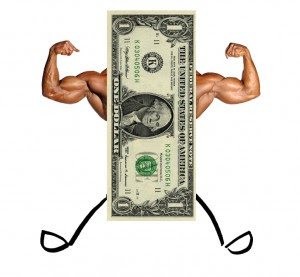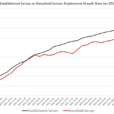The prospect of the Fed rate hike next month while many other countries consider providing more stimulus continues to underpin the dollar. Corrective downticks remain shallow and brief. The euro slumps to near seven month lows just below $1.0645. The greenback posted a big outside up day against the yen yesterday, and follow through buying today is putting it within spitting distance of a three-month high.

A tick up in the UK core CPI offset news of the second consecutive sub-zero reading on the headline. This has helped steady sterling near $1.5200. Many economists expect UK CPI to bottom out with this October reading, and as the base effect kicks in, theheadline may rise toward 0.3%-0.4% by the end of the year. That the core rate is at 1.1%, up from 1.0%, is also seen as a favorable sign. The June 2016 short-sterling futures contract is trading a little heavier, but participants do not want to get ahead of themselves. Retail sales, to be reported on Thursday are expected to be soft as the rugby-related sales unwind.
The euro had traded near GBP0.7500 in the middle of October and GBP0.7200 at the end of October. Today it approached GBP0.7000, a level it has not traded below since early August. Resistance is now pegged in the GBP0.7020-GBP0.7030 area on an intraday basis.
The German ZEW survey was mixed. Despite a sharp rise in the DAX over the month, the assessment of the current situation unexpectedly deteriorated to 54.4 from 55.2. It is the second consecutive decline and is the lowest reading since February.On the other hand, the expectations component rose more than expected.The 10.4 reading compares with 1.9 in October. It is the first increase since March.Of course, it is difficult to know precisely what the logic is, but the survey results are consistent with perceptions of near-term challenges (immigration?), but growing confidence that Germany will raise to the occasion.
Norway reported an unexpectedly strong Q3 GDP report, and this takes pressure off the central bank to cut rates next month. Q3 GDP rose 1.8% (quarter-over-quarter), and the Q2 0.1% contraction was revised to flat.Mainland GDP rose 0.2% on the quarter, a little better than expected and the Q2 pace was revised to 0.3% from 0.2%.The euro has been trading in a NOK9.20-NOK9.40 range, for the most part, this month.It tested the upside in the second half of last week, as oil was moving lower.It slipped through the middle of the range yesterday, and with the GDP figures, is moving closer to the bottom of the range. However, the move looks over for the day and a push back toward the NOK9.28-NOK9.30 looks reasonable.













Leave A Comment